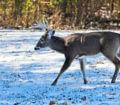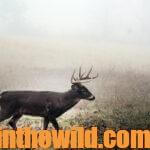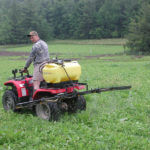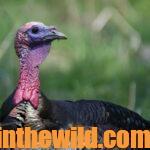Editor’s Note: Three elements cause deer to move – fear, sex and food. Once the hunter understands these three elements, he can predict deer movement more effectively and determine where and when a deer will show up. Fear usually plays a role in deer movement when hunter pressure is intense. Sex influences deer movement during the rut. However, every morning when a deer wakes up, he must decide what he’s eating for breakfast. Deer usually will eat something almost every day. Therefore, a food supply, as it relates to deer, may be the most-dependable ingredient for harvest success.
During the fall and winter, when rains and snow often cover the ground, much deer food will be inaccessible to the animals. However, once again the deer don’t stop eating. They change their feeding patterns and sometimes the foods on which they are relying. When the snow comes, the deer will begin to browse on small twigs and leaves that are above the snow. If the rains cause flooding, the deer will look for food on high ground. But what some hunters fail to realize is that the deer may feed out in water.
 In many river bottom swamps, after the acorns have fallen, and the land becomes flooded, the acorns will float to the surface. Depending on the water’s current, the acorns may be lying right on top of the water for the deer to eat. I’ve seen deer along a flood plain wading in chest-deep water, picking up the acorns out of the water and feeding on them. A current coming into a flooded hardwood bottom will cause the acorns to float to the surface and collect along the edge of the water or in pockets near the back of the flooded land. Whenever the acorns float to and concentrate is where you can expect to find high concentrations of deer. Sometimes the acorns and the deer will collect in unusual places.
In many river bottom swamps, after the acorns have fallen, and the land becomes flooded, the acorns will float to the surface. Depending on the water’s current, the acorns may be lying right on top of the water for the deer to eat. I’ve seen deer along a flood plain wading in chest-deep water, picking up the acorns out of the water and feeding on them. A current coming into a flooded hardwood bottom will cause the acorns to float to the surface and collect along the edge of the water or in pockets near the back of the flooded land. Whenever the acorns float to and concentrate is where you can expect to find high concentrations of deer. Sometimes the acorns and the deer will collect in unusual places.
 Once I found a productive stand where I took two fine bucks. The acorns from the hardwood bottom had floated up to the surface. As the water came into the swamp, the acorns were washed into a pine forest about 1/4-mile from the bottom. Although normally the deer would have nothing to eat in a pine forest, the water brought the acorns to the pines, which also drew the deer and made the hunting there productive.
Once I found a productive stand where I took two fine bucks. The acorns from the hardwood bottom had floated up to the surface. As the water came into the swamp, the acorns were washed into a pine forest about 1/4-mile from the bottom. Although normally the deer would have nothing to eat in a pine forest, the water brought the acorns to the pines, which also drew the deer and made the hunting there productive.
If you remember that deer have to eat, and if you know what they prefer to eat, where the food source is found and whether or not that preferred food is in relatively-short supply, then locating deer to hunt can be simple. The hunter who gleans information from wildlife biologists, learns where the plants, the trees, the shrubs, the fruits and the nuts that the deer like to eat are located and watches for the deer to change from one feeding pattern to another will increase his chances of success this season. One of the best ways to take a buck this year is to learn what the deer is putting in his stomach. Then you will know where you have to be to take him.

 To learn more information on women hunting, check out John E. Phillips’ book, “Outdoor Women’s Hall of Fame” (https://www.amazon.com/Outdoor-Womens-Hall-Fame-Premier-ebook/dp/B0771VP16V), available in Kindle and print versions. To receive your free book on “How to Make Venison Jerky,” go to https://www.emailmeform.com/builder/form/Ece3UZVcOo52cKPJcL.
To learn more information on women hunting, check out John E. Phillips’ book, “Outdoor Women’s Hall of Fame” (https://www.amazon.com/Outdoor-Womens-Hall-Fame-Premier-ebook/dp/B0771VP16V), available in Kindle and print versions. To receive your free book on “How to Make Venison Jerky,” go to https://www.emailmeform.com/builder/form/Ece3UZVcOo52cKPJcL.
















